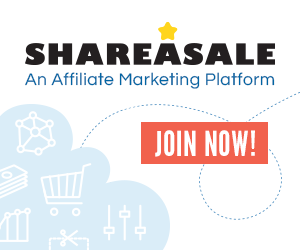Content, content, content – that’s been the mantra in recent years, with good reason.
Great content allows you to engage with your customers and position yourself as an expert in your field. Most importantly, content has the capacity to operate as a two-way street that, targeted effectively, opens up an ongoing dialogue with your consumer.
Why is this valuable? Because if you’re in an open conversation with your client base, you’re more likely to be front of mind.

So let’s delve a little deeper into content and explore the value of using it to start a conversation.
Know who you’re conversing with
It might seem like a no-brainer but the first step in any real conversation involves knowing exactly who you’re conversing with. What are their interests? What are their pain-points? Why are they on your site, reading your newsletter or visiting your Facebook page in the first place?
Then the content strategy comes down to creating compelling articles, items, videos or memes that are interesting to them and likely to elicit a response.
Frequently asked questions, hot topics, and trending themes are all great starting points for this type of compelling content, because chances are your audience has an insight into them and may have something to add.
Granted, this broad rule of creating interesting content applies right across any marketing strategy, but if you’re looking to start a conversation, it’s particularly relevant. Then it’s time to take it up a notch by inviting your readers to actually engage.
Solicit feedback
If you’re looking for your content to open up a two-way street rather than a one-way information flow, ASK your audience to engage.
Too often posts or website articles fail to welcome the audience in for the chat. Instead they act like lecturers touting their wisdom to the world, and in general audiences are a polite bunch who aren’t going to pipe up and interrupt your epistle unless you request they do.
Ask them questions like:
- What do you think?
- Have you experienced a similar situation?
- Is there anything we’ve missed?
- What would you do?
- Do you have any thoughts?
- Have your say here…
Give them the tools to talk
Your audience can’t talk back unless you give them the tools to do so. That means you need to ensure the comment section is activated on your website.
You may wish to alter your settings so comments have to be approved prior to going live, and if this is the case, make sure you check in a publish them regularly, otherwise the interest wanes.
The kick-off can be short and sweet
Starting a conversation can be short and sweet. It can be as simple a a quick survey on Facebook, a meme or a question about a hot topic.
For example, if you’re in the plumbing business pose a question on your Facebook page like: What do you look for when selecting a plumber? Or if you’re a hairdresser: “What are your favourite famous haircuts? Better yet, post a picture montage of five celebrities and ask your audience to vote on or select their favourite style.
Use hot topics
This was touched on a little earlier, but let’s elaborate further here, hot topics are a great way of starting a conversation because chances are your audience is across the situation, and have something they’d like to add.
Trending news items are a great source of inspiration. So depending on your industry or style, you might ask: “What did you think of Barnaby Joyce’s interview last night?” Or “Has the NBN made your internet better or worse?”
Use popular culture
Just as trending news is a good place to start, so is popular culture. A fashion outlet might ask: “Who’s the most stylish woman on television right now?” Or “Who has the better wardrobe – Claire Underwood in House of Cards or Jessica Pearson in Suits?”
An orthodontist might create a post showing just the smile but not the face of famous celebrities entitled “Pick this famous smile”.
Use industry specific questions
Meanwhile, there’s also room for industry specific questions and polls. A business coach might ask, “What’s your biggest business priority this year?” Or “What is your biggest business challenge right now?”
A travel agent could start a conversation around the best destinations of all time, asking readers to reveal their.
Product or service testing
The conversation also has the power to offer valuable information to your business, and can be used for purposes like product concept testing, or to hone the services you offer.
Say for example your business is considering launching a new product, ask your audience what they would like to see.
Stay involved in the conversation
Importantly, if you ask your audience to answer questions or offer feedback, recognise them for it by responding and staying part of the conversation.
A conversation is a two-way process and acknowledging or responding to what they post or say allows them to feel valued for their effort and part of your brand’s greater story.
Use the conversation
Now you’ve asked your audience to engage, you can also use that conversation to create further interesting content. You might draw from their responses to write a further blog or use their feedback to hone your products or services.
You will also soon have a greater insight into the topics and content that interests them most, allowing you to create even better more compelling articles in the future.
Key takeaways
Engaging your customers in a conversation allows them to feel involved in your business, aligned with it and invested in it.
Don’t forget to:
- Ask for input
- Use different tools and mediums to elicit feedback
- Recognise audience comments or engagement
- Learn from it























